Uncovering the Untold Story of Sacagawea: A Heroine Beyond Her Time
Embarking on a quest of epic proportions in 1804, Meriwether Lewis and William Clark led a party of men into the wild of the American West. Joining them was an unexpected guide: Sacagawea, a Shoshone woman carrying her infant son.
But she was more than a tour guide. Delve deeper into her story and discover remarkable details about her life that have been lost to time. Uncover the untold story of a heroine beyond her time.
The Exciting Life of Sacagawea: From Shoshone Princess to Rocky Mountain Explorer!
Sacagawea’s early life is shrouded in myth and mystery, but historians do know that she was born into the Lemhi Shoshone tribe in 1788, living in Idaho’s Lemhi County surrounded by the towering peaks of the Rockies.
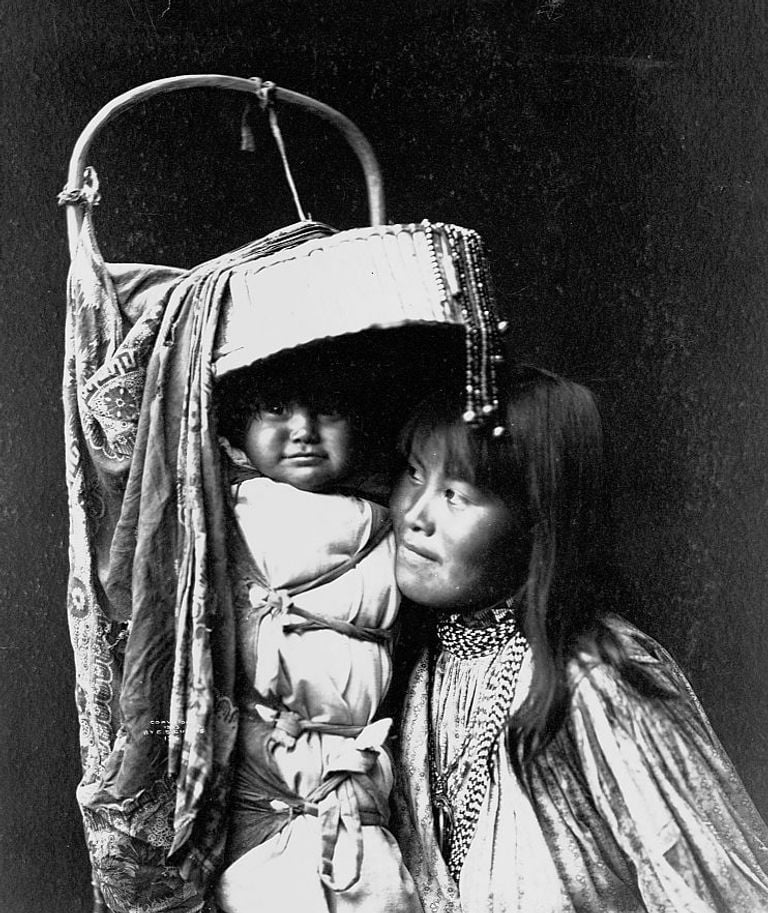
Source: Edward S. Curtis/Library of Congress/Corbis/VCG via Getty Images
Though the romantic idea of her being a “princess” is likely fictional, Sacagawea’s life was certainly no less eventful. From a young age, she was destined for a life of adventure, from exploring the Rockies to becoming a key figure in American history.
Uncovering the Mystery of Sacagawea's Name: How Lewis and Clark Spelt Her Name Differently
From “Sacagawea” to “Sacajawea” to “Sakakawea”, the name of the legendary woman has been spelled in various ways throughout history. It’s Lewis and Clark who gave us most of the knowledge we have of Sacagawea, yet often, the two explorers used different spellings for her name.
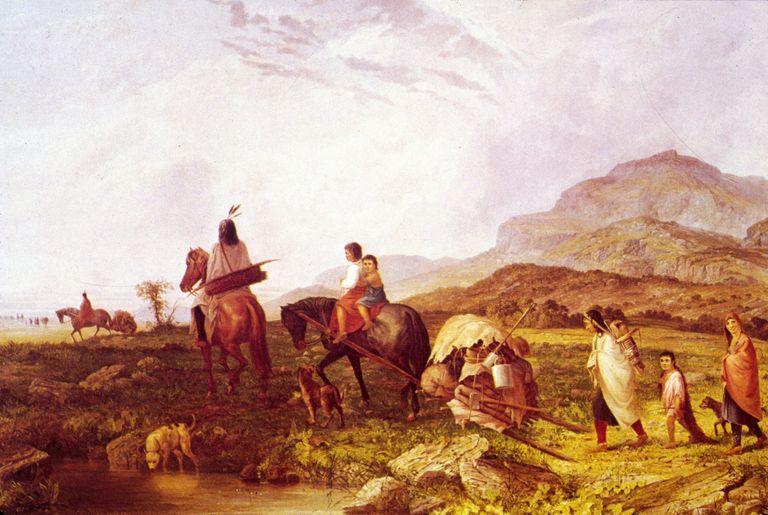
Source: MPI/Getty Images
It’s customary in North Dakota to use the “Sakakawea” spelling, but no matter how you spell it, one thing is certain – Sacagawea remains an iconic figure that continues to fascinate the world today.
A Traumatic Childhood: The Story of Sacagawea
At just 12 years old, Sacagawea’s life was thrown into turmoil. The Lemhi Shoshone, her people, were no match for the Hidatsas, who had guns from white traders giving them a powerful advantage. This bitter rivalry saw Sacagawea experience a traumatic event, one of many unknowns that surround her life.
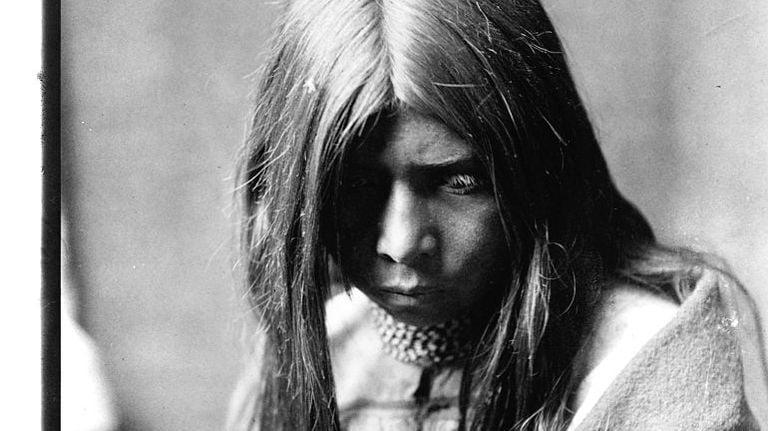
Source: Edward S. Curtis/Library of Congress/Corbis/VCG via Getty Images
Despite our lack of knowledge, we can be sure that the strength and resilience she developed during her childhood served her well when she embarked on her remarkable journey with Lewis and Clark.
A Captivating Tale of Captivity: Sacagawea's Journey
As Autumn swept across the landscape in the year 1800, Sacagawea ventured with a party of Shoshone to hunt buffalo along the Salmon River in Idaho. Little did she know that her life would be changed forever in that moment. Out of nowhere, a group of Hidatsa attacked the Shoshone and Sacagawea was taken captive.

Source: Ben Wittick/Buyenlarge/Getty Images
Although the exact length of her captivity is unclear, it must have been for a while, as Sacagawea managed to master the Hidatsa language. It was this ability that would eventually lead her down a remarkable path of exploration and discovery.
From Captive to Captor: The Abrupt Change in Sacagawea's Life
Sacagawea’s life took a drastic turn when her Hidatsa captors sold or lost her in a round of gambling to a man named Toussaint Charbonneau, a French Canadian trapper in his 30s or 40s. This abrupt change meant that the teenage Sacagawea found herself being transferred from one captor to another.
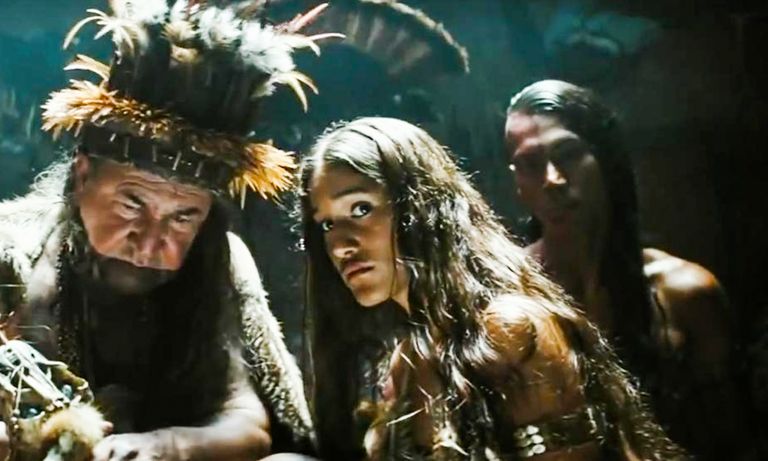
Despite the harsh circumstances, this would become a defining moment in her life as Sacagawea would then go on to become an important figure of the Lewis and Clark expedition.
Sacagawea's Unconventional Domestic Arrangement
Toussaint Charbonneau had adopted a Hidatsa custom of polygamy when he decided to take Sacagawea, who was between 13 and 15 years old, as his second wife. Charbonneau was already married to another woman, and the trio settled in a Hidatsa village called Metaharta.
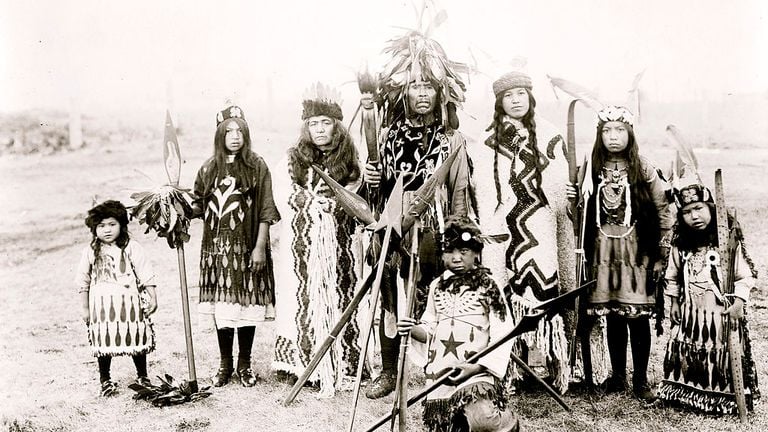
Source: Leslie Corbett/Buyenlarge/Getty Images
Although it is impossible to know for sure, we can only speculate as to the dynamics of this unusual domestic arrangement. Did Sacagawea have any say in this arrangement? Did the two wives get along? So many questions remain unanswered.
A Meeting of Legends: Lewis, Clark, and Sacagawea
Sacagawea’s life changed dramatically when she became the wife of French-Canadian fur trader, Toussaint Charbonneau. Little did she know, this fateful union would bring about her introduction to two of the most famous explorers in history: Meriwether Lewis and William Clark.
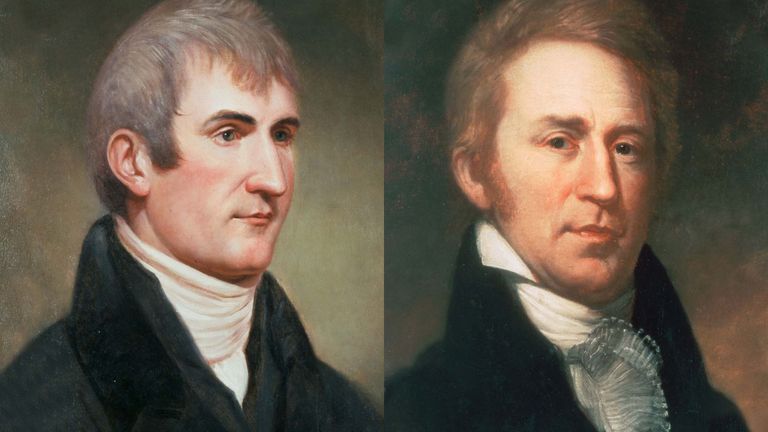
Source: Charles Willson Peale/Wikipedia
As the two men prepared to embark on their expedition of the newly acquired Louisiana Territory, they spent the winter of 1804-1805 at Fort Mandan. Here, they encountered the legendary Shoshone woman, Sacagawea, who would accompany them on their journey.
Discovering Sacagawea: Lewis and Clark's Epic Encounter at Fort Mandan
In early winter of 1804, the intrepid explorers Lewis and Clark set out for a place called Fort Mandan in North Dakota, home to the Hidatsa people. Here, they encountered a French-Canadian trapper named Charbonneau, who was accompanied by his wife Sacagawea.
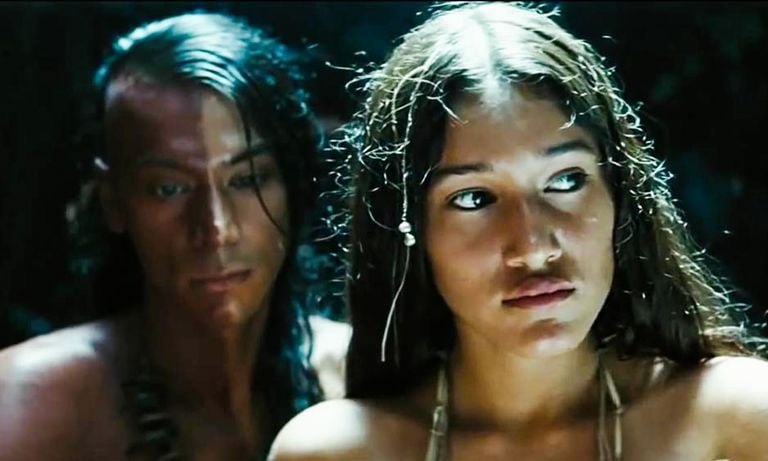
Source: New Line Cinema
On November 4th, Clark wrote in his journal that Charbonneau would be joining the expedition, bringing his wives along with him. Little did they know, their encounter with Sacagawea would be the start of an incredible journey. Thanks to her invaluable help, Lewis and Clark would venture into the unknown, and make history.
Charbonneau - Saviour of the Lewis and Clark Expedition!
When Lewis and Clark first encountered the French-Canadian trapper, Jacques Charbonneau, they were unimpressed. Little did they know that Charbonneau’s knowledge of the Hidatsa language and his Shoshone wife would prove invaluable for their expedition across the uncharted American territories.
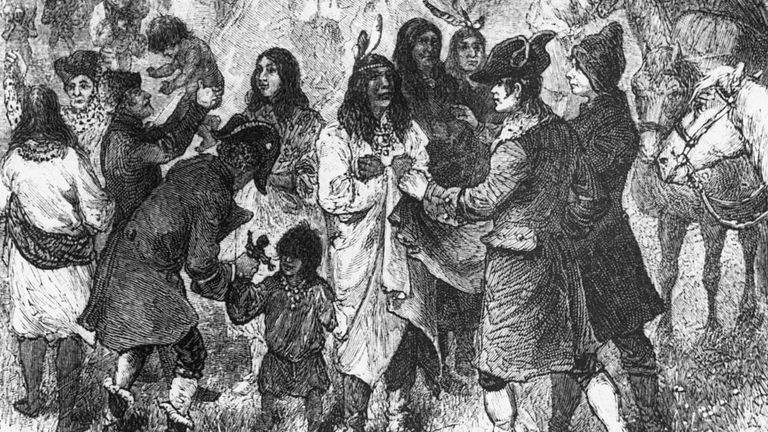
Source: Bettmann via Getty Images
Thanks to Charbonneau’s help, the expedition was a success, becoming the first to traverse the continent from the Mississippi River to the Pacific Ocean. Without his assistance, their journey would have been much more difficult. Charbonneau: a true hero of the expedition.
Translating Through a Labyrinth of Languages
Exploring the uncharted West was no easy feat for the Corps of Discovery. Communicating with the many tribes they encountered, a complex web of translation was necessary. Pierre Cruzatte and Francois Labiche, who had Native American mothers and French fathers, could bridge the gap between English and French for expedition leader Charbonneau.
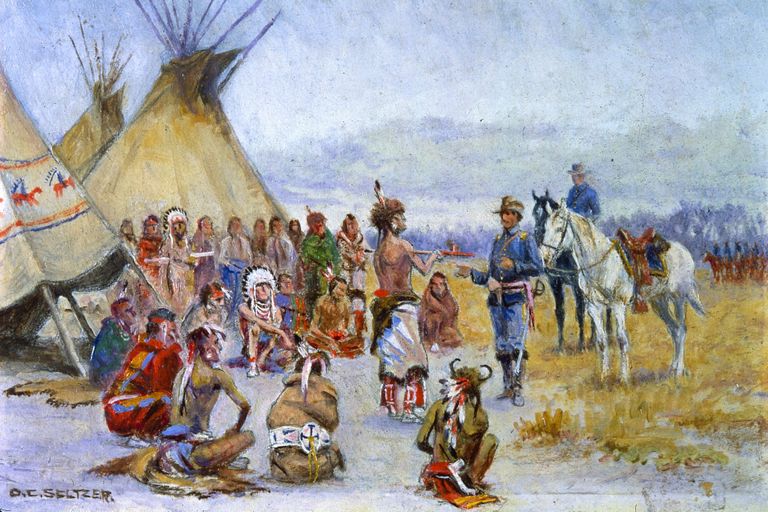
Source: MPI/Getty Images
Sacagawea could then translate Charbonneau’s French into Hidatsa for the Shoshone. To finish the process, the Shoshone’s response was translated back into English. An intricate process, but it was the only way for the expedition to interact with their new surroundings.
Sacagawea: The Unstoppable Adventurer
On April 7th, 1805, Sacagawea set off on an epic journey with the expedition group and her newborn son, Jean Baptiste. Despite only having given birth eight weeks prior, Sacagawea strapped her son to her back and fearlessly embarked upon the treacherous voyage across the uncharted terrain of North Dakota up the Missouri River towards the Pacific coast.
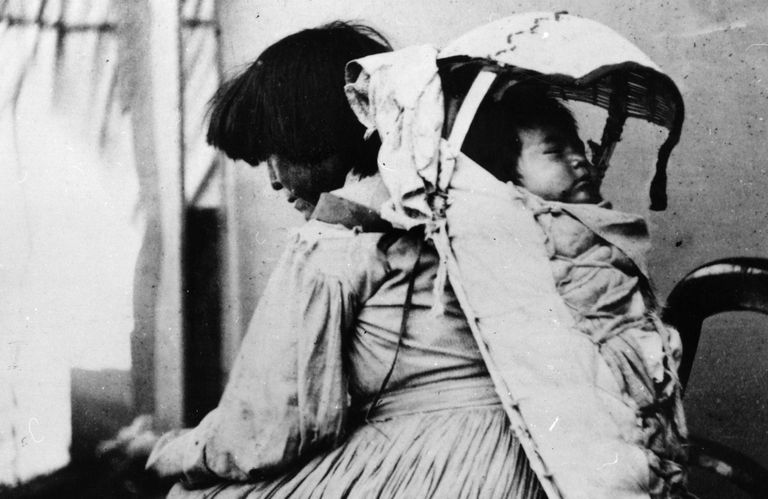
Source: Otto Herschan Collection/Hulton Archive/Getty Images
This remarkable feat of tenacity and courage is a testament to Sacagawea’s unflinching spirit and her unwavering dedication to the expedition. Her journey is an inspiring story of strength and perseverance – a reminder that with courage and determination, nothing is impossible.
A Heroic Journey: Sacagawea's Incredible Accomplishments
From the very start of their journey, the expedition was indebted to Sacagawea for her immense value to the team. She was a fountain of knowledge, able to recognize edible plants, roots, and fruits in the wild and provide sustenance that stretched their meager supplies.
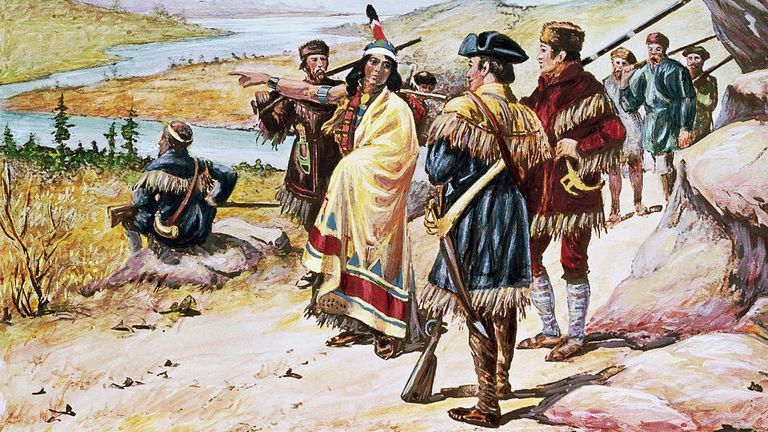
Source: Bettmann via Getty Images
Despite having a newborn to care for, Sacagawea’s expertise in the natural world was a powerful asset to the group. Her bravery and resourcefulness were key to the success of the expedition, proving that this young woman had what it took to become a hero.
The Amazing Adventures of Sacagawea and Baby Jean Baptiste: A Story of Strength and Survival
Sacagawea was a warrior-mother on an epic journey with Clark and Lewis, carrying her two-month-old baby, Jean Baptiste, in tow. Despite the difficulties of the expedition, baby Jean Baptiste was healthy and well-cared for, thanks to Sacagawea’s incredible strength and the doctor who provided care for her throughout the whole journey – none other than the leader of the expedition.
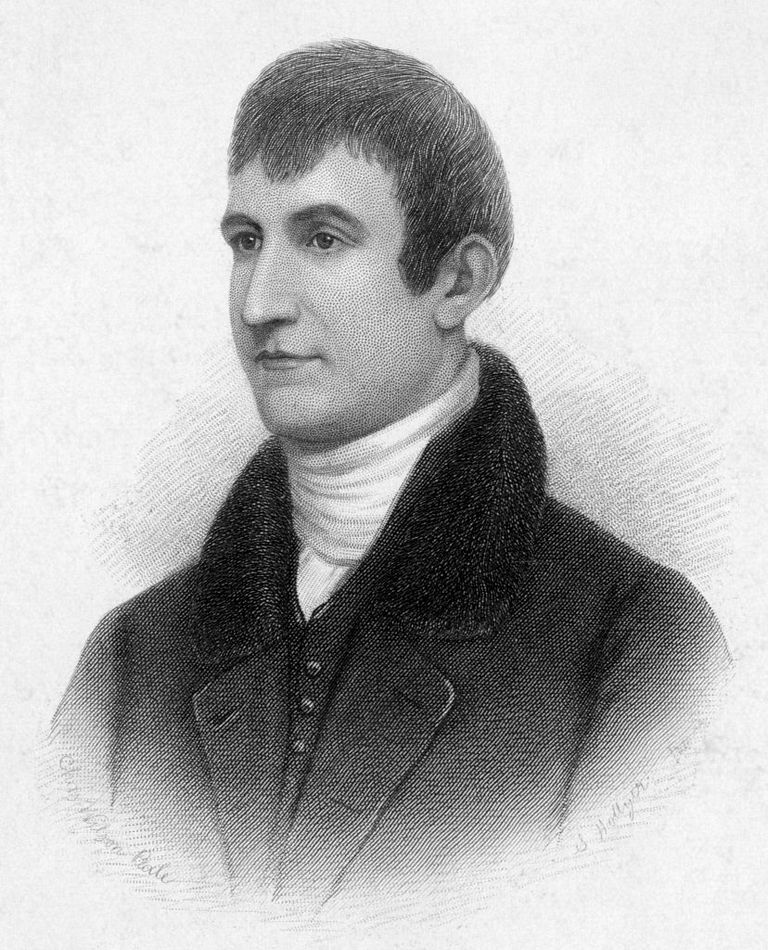
Source: Bettmann via Getty Images
This is the inspiring story of Sacagawea’s courage, resilience and determination as she tirelessly pushed forward with her baby in her arms, overcoming all obstacles in her path.
Sacagawea's Intense Labor Relieved by Rattlesnake Remedy
When Sacagawea went into labor, Meriwether Lewis stood in as a de facto midwife. The pain was intense, but Lewis was ready with a natural remedy to subdue it. He crushed a rattlesnake’s rattle, mixed it with water, and gave it to Sacagawea to drink.
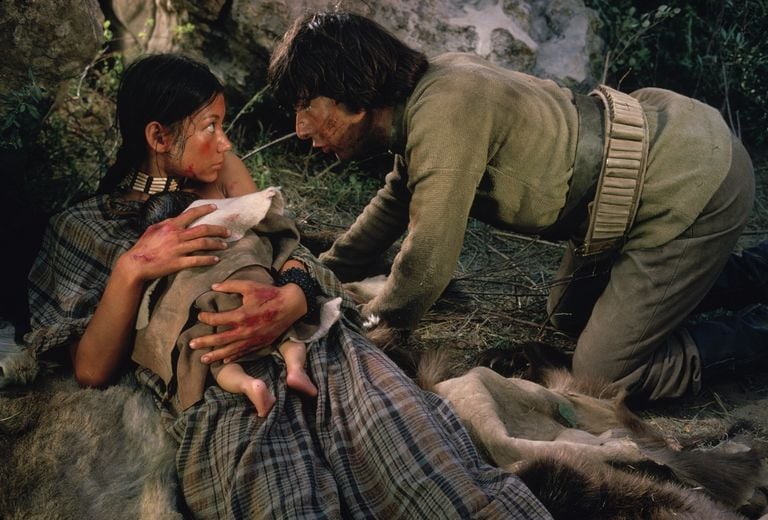
Source: Ernst Haas/Ernst Haas/Getty Images
Incredibly, within ten minutes she had given birth! Although it may seem strange to us today, this rattlesnake remedy was common practice among some Native American tribes. Sacagawea’s labor was intense, but ultimately was successful, with the help of Lewis and this natural remedy.
Charbonneau's Nightmare on the River
As the expedition paddled up the river in their pirogues, Sacagawea and Jean Baptiste shared a canoe with Charbonneau as their pilot. Lewis described him as “perhaps the most timid waterman in the world”. His timid demeanor would soon be put to the test.
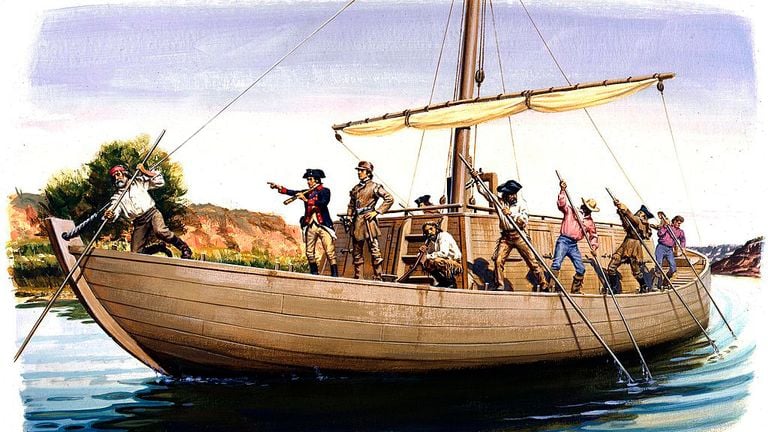
Source: Ed Vebell/Getty Images
After just over a month on the journey, the party encountered an unexpected mishap that nearly ended in disaster. Charbonneau’s nerves were put to the ultimate test as he attempted to navigate them out of danger. Would they make it out alive?
Sacagawea Saves the Day: Heroism on the River
When Charbonneau’s pirogue was hit by an unexpected gust of wind, it seemed like all was lost. Crucial items like medicines, instruments, and travel journals were thrown into the river. Luckily, Sacagawea was there to take charge.
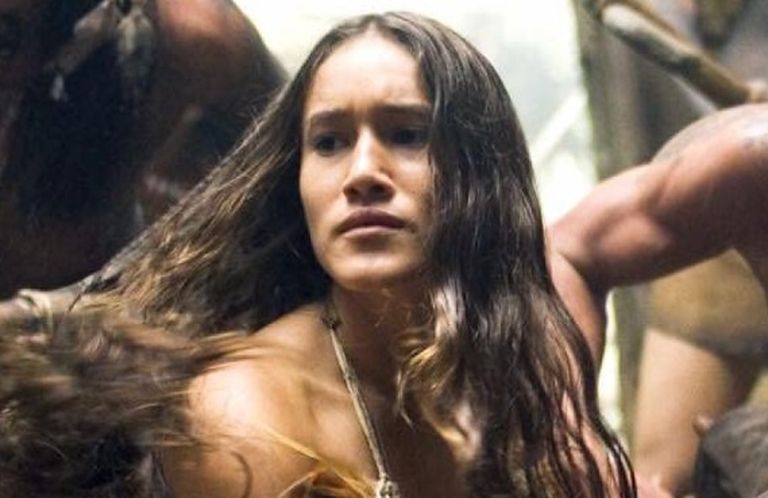
Source: New Line Cinema
With quick thinking and even quicker action, she managed to rescue the lost items from the river. In recognition of her heroism, Lewis and Clark named a tributary of the Missouri River after her. Sacagawea proved, in this moment, that she was more than just a guide; she was a true hero.
Chance Reunion in the Rocky Mountains: Sacagawea's Surprise
As Lewis and Clark made their way through the Rocky Mountains, they encountered a band of Shoshone people. What happened next was nothing short of remarkable – amidst the strangers, Sacagawea suddenly recognized someone she’d known for years!
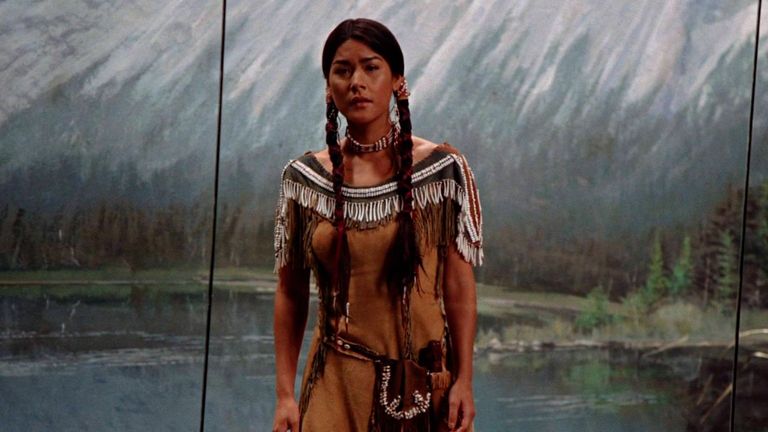
Source: Twentieth Century Fox
In an incredible twist of fate, the explorer was reunited with a friendly face in the midst of their treacherous journey. Sacagawea hadn’t seen this person in years, so the chance reunion was a surprise to say the least. It was one of the more unexpected events of the expedition!
"Reunited at Last: Sacagawea's Surprising Encounter With Her Brother"
Sacagawea’s conversation with the Shoshone took a wild turn when she discovered that the leader of the group was none other than her long-lost brother, Cameahwait. She had not seen or heard from him since her abduction by the Hidatsa years ago.
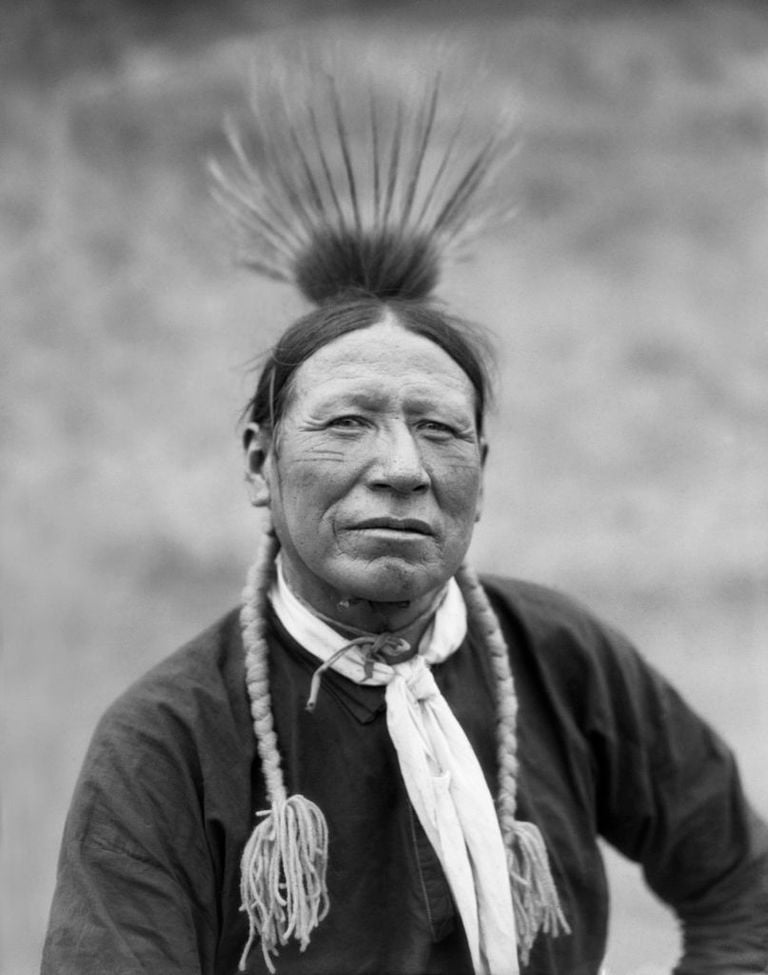
Source: Armstrong Roberts/ClassicStock/Getty Images
The chief was overjoyed to see his sister, and was more than willing to provide the expedition with the much-needed horses and guidance for their crossing of the Rockies. It was a heart-warming reunion between two siblings, and one that ultimately helped Lewis and Clark’s journey succeed.
Unlock the Power of One: Sacagawea's Incredible Contribution to Lewis and Clark's Expedition
As Lewis and Clark’s Corps of Discovery made their way across America, they had a unique asset on their team: Sacagawea, the only female and Jean Baptiste, the only child. This powerful one-two punch gave the expedition an incredible advantage.
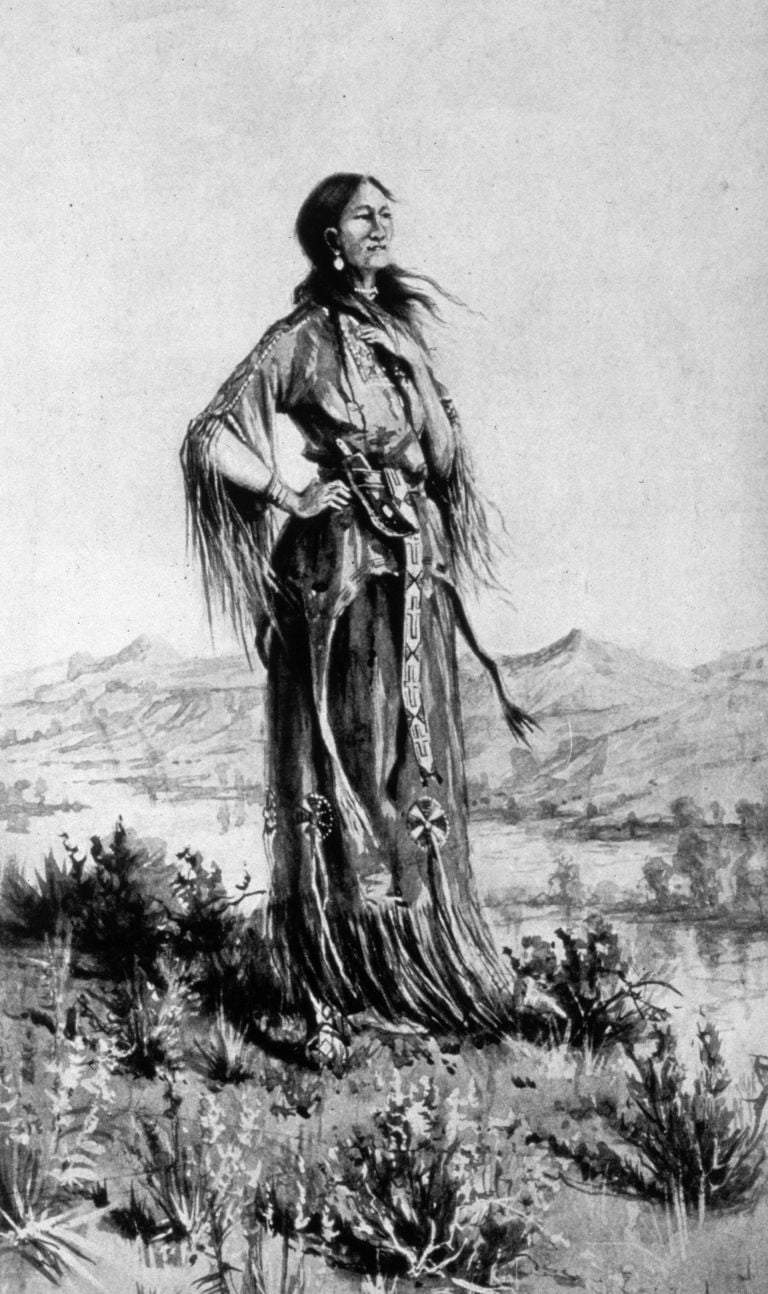
Source: MPI/Getty Images
Sacagawea’s knowledge of the region and her Shoshone language provided invaluable insights that helped the group navigate the unfamiliar terrain and interact with local tribes peacefully. Her presence helped ensure the success of the mission, and for that, she is remembered and celebrated to this day.
"Sacagawea: The Unsung Hero of the Lewis and Clark Expedition"
Having a Shoshone woman and her child with them on the Lewis and Clark Expedition proved to be invaluable. Sacagawea’s presence made a huge difference when it came to building trust with the various Native American tribes they encountered.
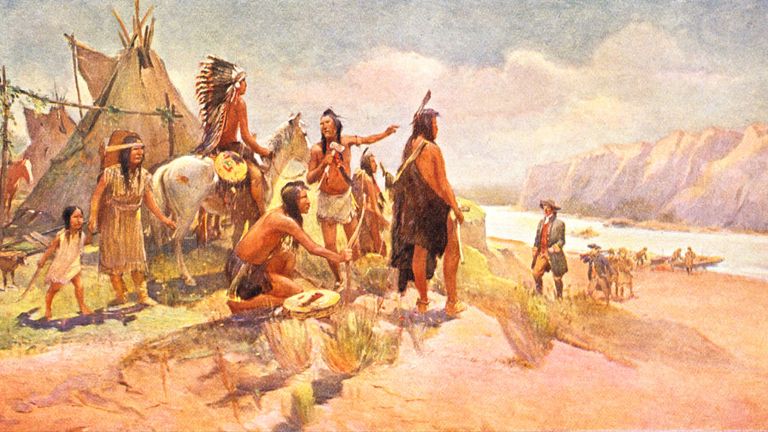
Source: Nawrocki/ClassicStock/Getty Images
Her presence was a powerful symbol of peaceful intent, providing assurance that these explorers were not there to cause any harm. Without Sacagawea, the expedition would not have been nearly as successful, making her an unsung hero of this incredible journey.
Uncovering the Truth: Sacagawea Was Not a Guide, but Still Helped the Expedition
Though the popular narrative typically portrays Sacagawea and her husband Charbonneau as guides for the Lewis & Clark expedition, this was not the case. In reality, they were hired for their language skills, not their outdoor expertise.
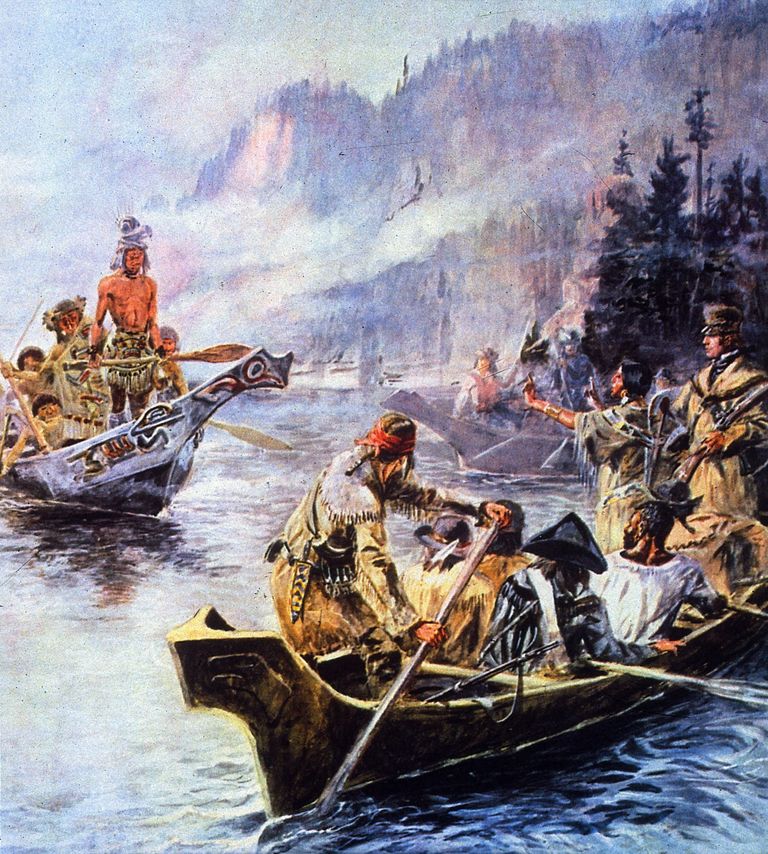
Source: MPI/Getty Images
Nonetheless, Sacagawea did prove her worth on one occasion, when she guided the expedition back on the right path after they had taken a wrong turn. This remarkable woman may not have been a guide, but she still helped shape the course of history.
Sacagawea Guides the Corps of Discovery Through Bozeman Pass
On their return journey eastwards from the Pacific Northwest, Sacagawea led the Corps of Discovery on an adventure through the Bozeman Pass, located south of the Yellowstone River. In July 1806, Captain Clark wrote in his journal expressing his gratitude for the invaluable service provided by this remarkable woman as a guide and pilot.

Source: Robert Alexander/Getty Images
He noted, “The Indian woman… has been of great service to me as a pilot through this country.” Sacagawea’s excellent navigational skills and knowledge of the terrain enabled the party to traverse the pass safely and reach their destination.
Sacagawea's Unpaid Journey Across America
Sacagawea’s incredible 16-month trek across America with the Lewis and Clark expedition was a feat of courage and strength, especially considering she had a young child in tow. Yet, despite her invaluable contributions to the expedition, she wasn’t paid a single cent for her efforts.
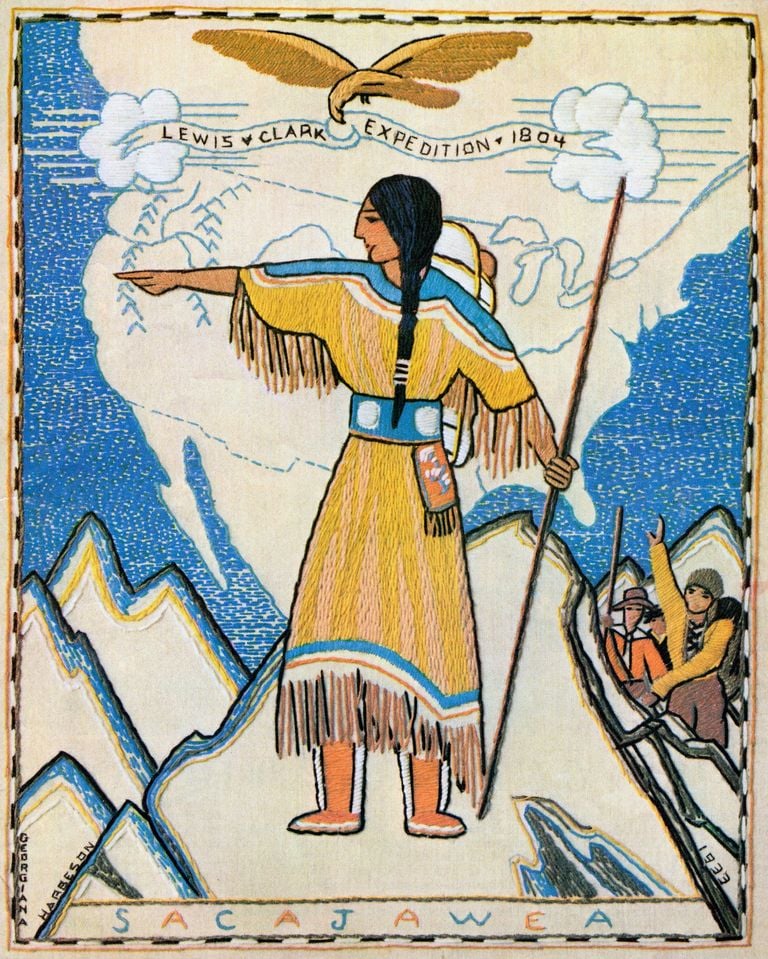
Source: GraphicaArtis/Getty Images
Her husband, Charbonneau, however, was rewarded with a handsome sum of $533.33 – an eccentric amount at the time, but a reward nonetheless. Sacagawea’s incredible story is one of unwavering courage and selflessness, despite not receiving a penny for her journey.
Sacagawea Reward: Land, Education, and Gratitude
When it came to rewarding Jean-Baptiste Charbonneau for his work as an interpreter, the US Government didn’t forget about his mother, Sacagawea. Along with the 320-acre parcel of land her son received, William Clark also made sure to thank her in another way, paying for her son’s education.
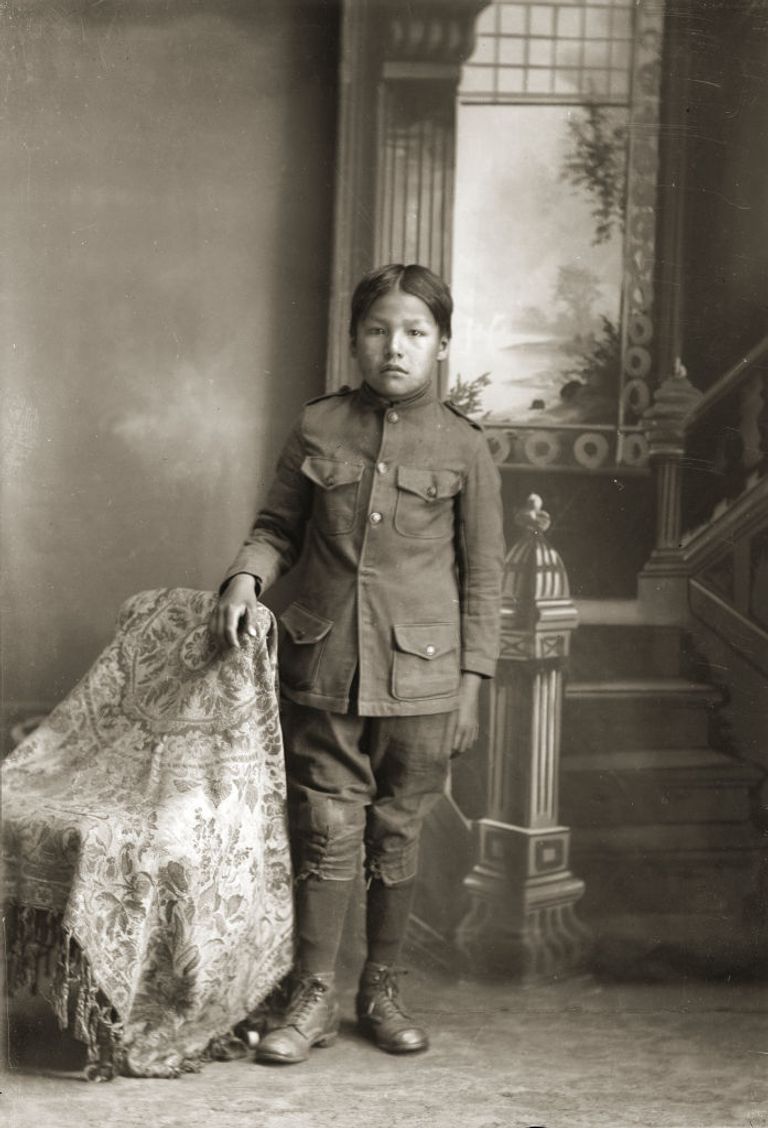
Source: Charles Van Schaick/Wisconsin Historical Society/Getty Images
Clark himself seemed to regret the shabby treatment of the young Shoshone woman and was determined to show his gratitude. Sacagawea’s language skills had greatly enhanced Charbonneau’s interpreting abilities and now she was being rewarded for her contribution.
Sacagawea: A Pioneer Trailblazer
Sacagawea was a true trailblazer and a remarkable figure in American history. Despite being unpaid, she was treated as an equal to her male counterparts and was an invaluable asset for Lewis and Clark.
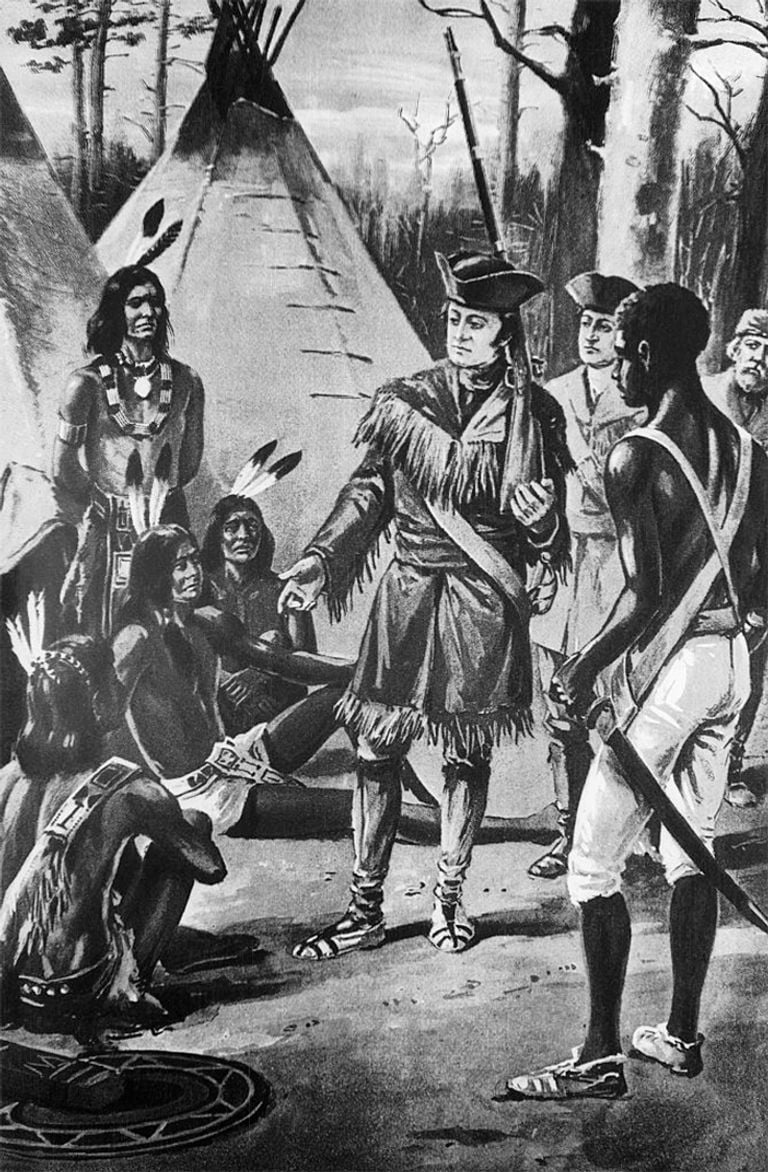
Source: Bettmann via Getty Images
Her key role was negotiating trade and bartering deals with the Native Americans they encountered along the trail, which proved to be essential to the success of the expedition. Sacagawea’s contributions were invaluable and she deserves to be celebrated as a pioneer and a symbol of true strength and courage.
Sacagawea's Courage and Wisdom Guides Lewis and Clark!
On their journey to the Pacific in November 1805, Lewis and Clark were astounded to discover that Sacagawea had an equal say in the vote of where to build the winter camp. Her superior knowledge of the area they were exploring was invaluable, and they were thankful to be guided by her wisdom.
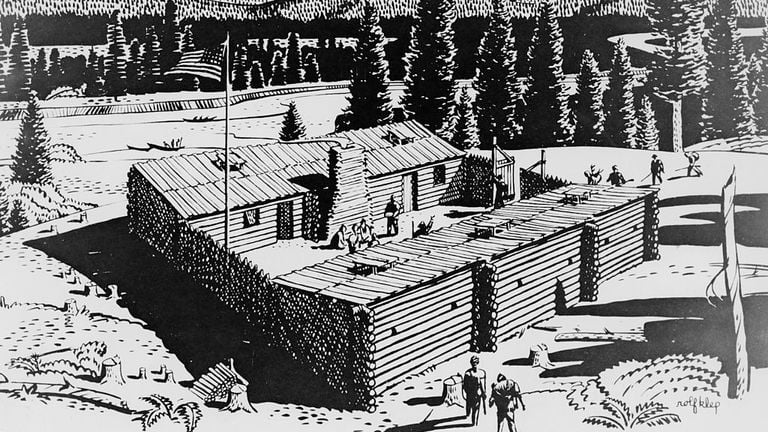
Source: Kean Collection/Archive Photos/Getty Images
One shining example of Sacagawea’s courage and resourcefulness was when she skillfully navigated them through the treacherous Bozeman Pass – a feat that may have saved their lives. Sacagawea’s strength, resilience, and intelligence were essential to the success of the Lewis and Clark expedition.
Sacagawea's Adventure Comes Full Circle
After an incredible expedition with Lewis and Clark, Sacagawea, along with her husband Charbonneau and son Jean Baptiste, returned to the Hidatsa territory where they had first lived. After three years of settling in, Charbonneau decided to take advantage of the 320 acres of land he had earned for his participation in the expedition.
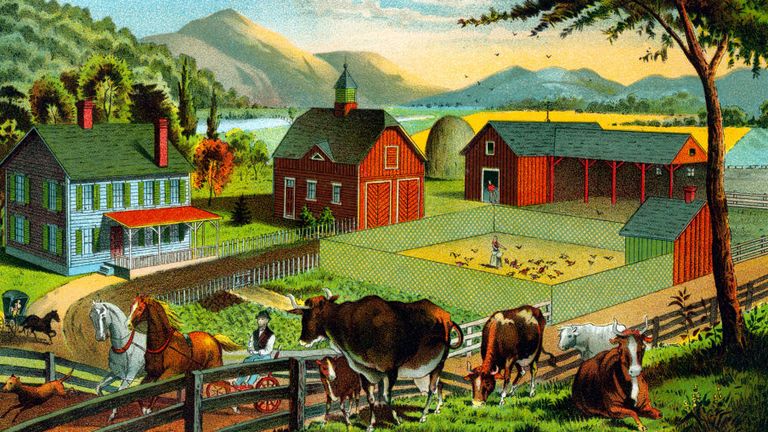
Source: Pierce Archive LLC/Buyenlarge via Getty Images
So, taking Sacagawea and Jean Baptiste along, Charbonneau embarked on a new adventure, this time to the promised land of his 320-acre reward. In this way, Sacagawea’s great journey came full circle.
From Farm to Fur: The Epic Journey of Charbonneau and Sacagawea
When Charbonneau and Sacagawea moved to St. Louis, Missouri to pursue a new life of farming, it didn’t quite pan out for them. Charbonneau, who was used to the wild life of a fur trapper, couldn’t settle into the confines of a farming life. To reclaim his adventurous spirit, Charbonneau joined a fur-trapping team in 1811, and the couple left their farm for good.
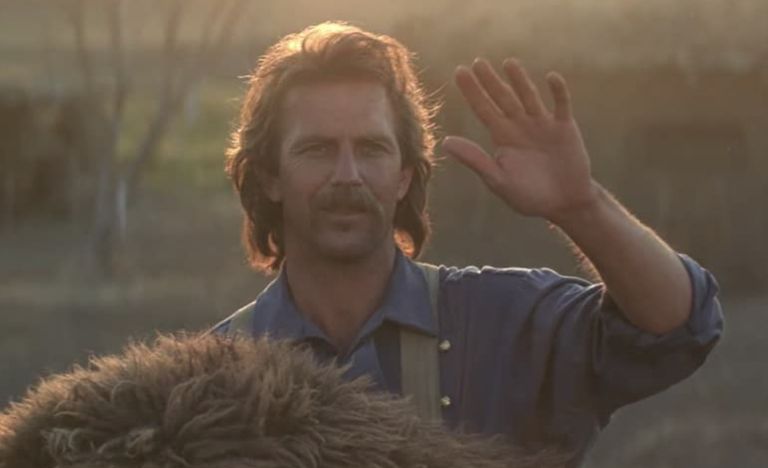
Source: Orion Pictures
They entrusted their son, Jean Baptiste, in the care of William and Clark. Together, Charbonneau and Sacagawea embarked on a thrilling journey from farm to fur!
The Truth Behind William Clark and Sacagawea's Relationship
William Clark and Sacagawea’s relationship has been the subject of much speculation and debate. During the expedition, Clark and Sacagawea’s son Jean Baptiste developed an affectionate bond, so much so that Clark even gave the young boy the nickname “Pomp.”
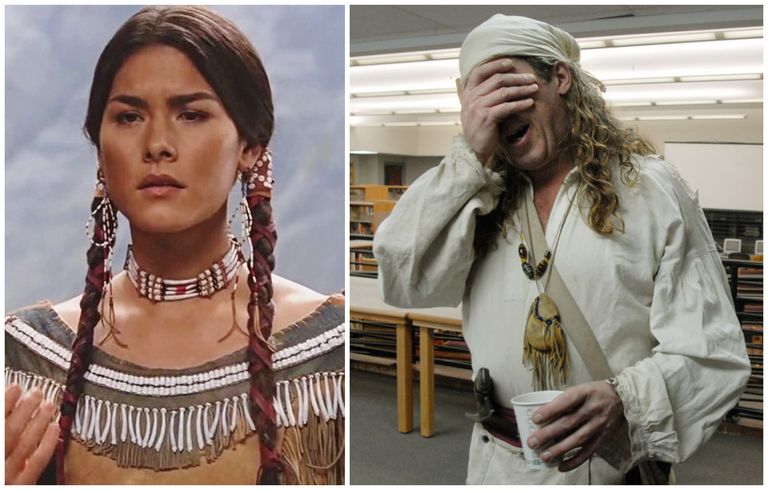
Source: David Jennings/Digital First Media/Boulder Daily Camera via Getty Images
This led some to believe that Clark and Sacagawea were secretly lovers. However, while there is very little evidence to support this theory, Clark and Sacagawea’s friendship still stands as a testament to their remarkable journey together.
Creating a Family Across Borders: William Clark's Quest to Adopt Jean Baptiste and Raise Lisette
William Clark’s life changed when he met Sacagawea and her son, Jean Baptiste. Clark developed a special bond with the boy, writing in a letter to Jean Baptiste’s parents, “As to your little son (my boy Pomp) you well know my fondness for him and my anxiety to take and raise him as my own child.”
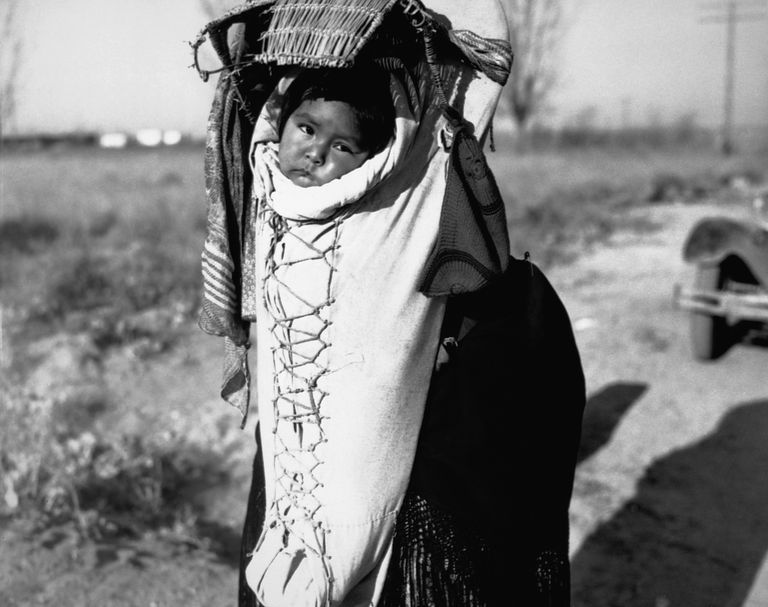
Source: CORBIS/Corbis via Getty Images
Not long before Sacagawea’s unfortunate death, she gave birth to a daughter, Lisette, whom Clark also wished to adopt and raise as his own.
A Life-Changing Adventure: How Jean Baptiste Found a Home in Europe
At 18, Jean Baptiste’s life changed drastically. Clark had adopted him and promised to pay for his education at the St. Louis Academy. When the aristocratic Duke Friedrich Paul Wilhelm of Württemberg came to explore the upper reaches of the Missouri, where he met Jean Baptiste.
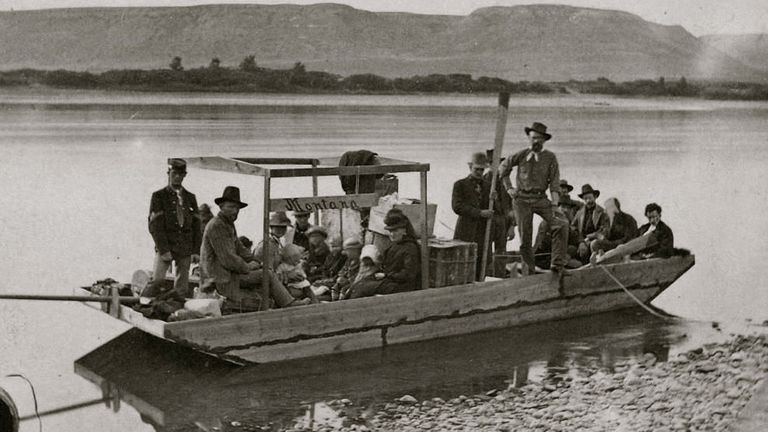
Source: Buyenlarge/Getty Images
Impressed by the young man’s skills, the Duke invited him to join him in Europe, a life-changing adventure that would provide Jean Baptiste with a home he had never known before.
Jean Baptiste Charbonneau: The Trapper, Explorer, and Master of Languages
Jean Baptiste Charbonneau lived a life of luxury and opulence in Europe, where he added German and Spanish to the languages of Shoshone, Hidatsa, English, and French he already knew. Returning to America in 1829, he followed in the footsteps of his biological and adopted fathers and devoted his life to exploring and trapping.
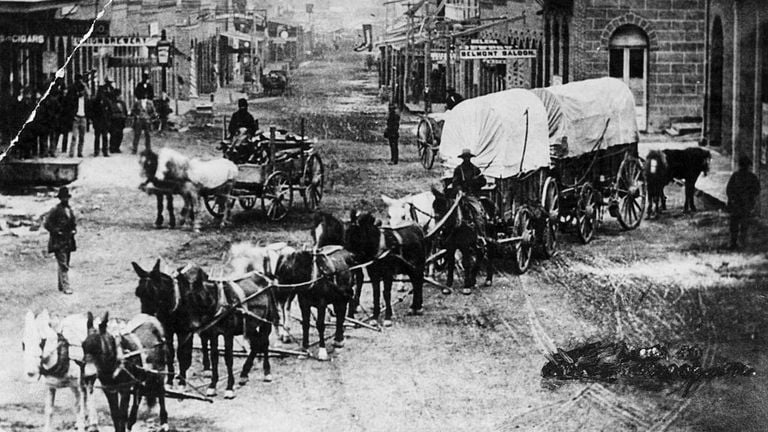
Source: Bettmann via Getty Images
Despite his passing in 1866 at the age of 61 as he was on his way to the Montana gold fields, Jean Baptiste’s legacy lives on. His mastery of multiple languages lives on today, a testament to his incredible life.
The Golden Coin that Took the World by Storm – the Sacagawea Dollar!
In 2000, the U.S. Mint released the Sacagawea Golden Dollar, featuring a unique outer coating of manganese brass that gave it a golden hue, despite its lack of gold. Although it failed to gain traction in the States, it quickly became a hit in one nation in particular.
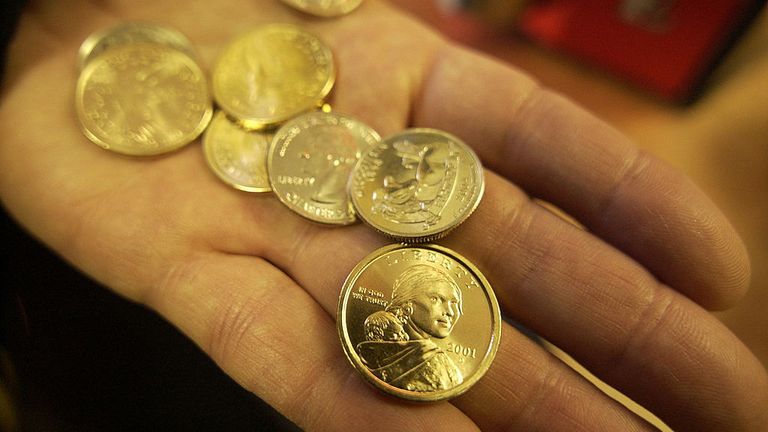
Source: Lyn Alweis/The Denver Post via Getty Images
The Sacagawea Dollar took the world by storm, becoming widely used and appreciated by people everywhere. So, if you’re ever in a foreign country, keep an eye out for this special golden coin!
Sacagawea Inspires Confidence in Ecuadorians Too!
Ecuadorians have welcomed the Sacagawea Golden Dollar with open arms, as the official currency of the country is the U.S. dollar. This is due to the suspicion that the typical American greenbacks are vulnerable to counterfeiting. The solidity of the Golden Dollar has instilled confidence in Ecuadorians, just as it did for Lewis and Clark during their journey.
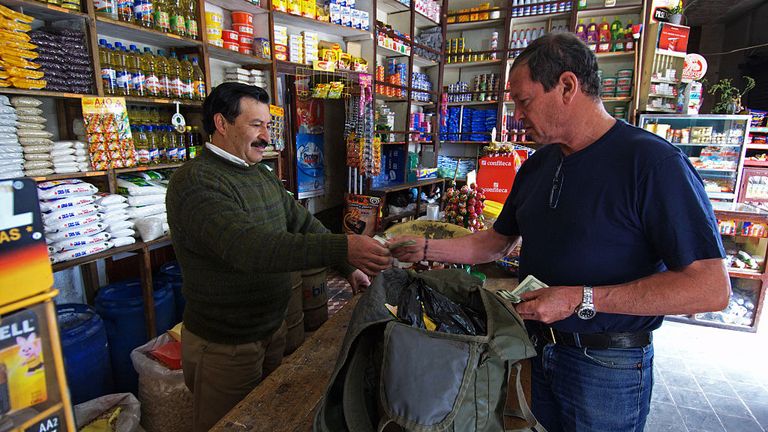
Source: Arne Hodalic/Corbis via Getty Images
In addition to the coins, the U.S. has paid homage to the Shoshone woman in many other ways. Sacagawea’s legacy is strong and far-reaching!
Unfathomable Honors for Sacagawea: A Tribute to Lasting Legacy
From statues to U.S. Navy vessels, Sacagawea’s legacy lives on in beautiful tributes that honor her courage and spirit. According to the U.S. National Park Service, she is the only American woman to have more statues dedicated to her than any other. Not only that, but three U.S. Navy vessels have also been named in her honor.
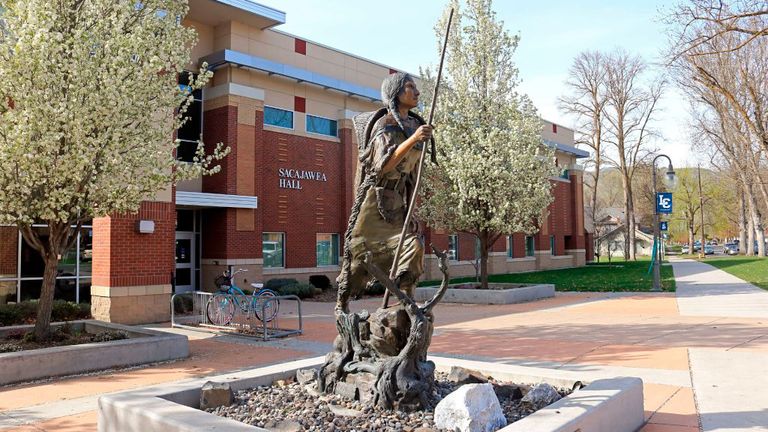
Source: Education Images/Universal Images Group via Getty Images
On top of that, countless parks, schools, and other landmarks across the nation have been named after her – a testament to her remarkable, lasting legacy.
Honoring Sacagawea: A Legacy Now and Forever
The U.S. Postal Service paid tribute to Sacagawea in 1994 with a 29-cent commemorative stamp, although nobody knows exactly what she looked like. The North Dakota Heritage Center’s bronze statue of Sacagawea is believed to be the closest likeness, modeled after her own granddaughter, Mink Woman. Despite Sacagawea’s achievements, it is still difficult to find any reliable information about her life and death.
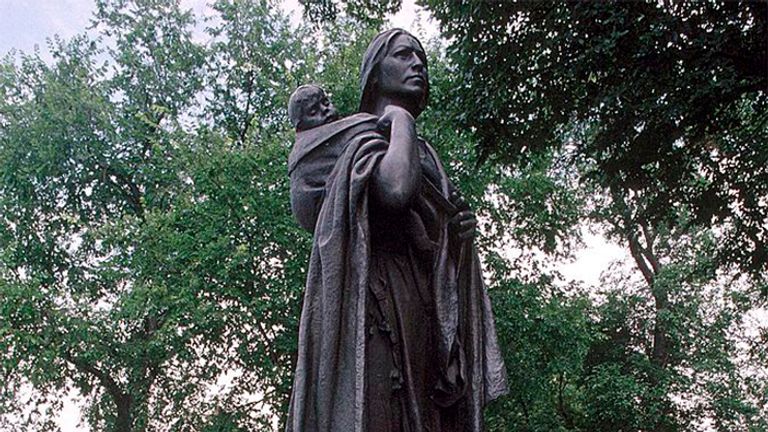
Source: Jean-Erick PASQUIER/Gamma-Rapho via Getty Images
Nevertheless, we remain forever grateful for her invaluable contributions to the Lewis and Clark expedition and ensure that her legacy is preserved for generations to come.
Unveiling the Mystery of Sacagawea's Death
Sacagawea’s essential contributions to the famous expedition are undeniable. However, the circumstances of her death remain a mystery, shrouded in rumors. Most researchers believe that Sacagawea passed away in late 1812, likely due to typhus.

Source: Joe Amon/The Denver Post via Getty Images
She was possibly around 25 years old when her life of adventure came to an end. Nonetheless, this is just one of the many speculations about her death. Was she really taken by typhus or was it something else? The truth still remains a mystery.
Unraveling the Mysteries of Sacagawea's Legacy
For many years, the accepted account of Sacagawea’s death was that she passed away in 1812 at Fort Manuel. Documentary evidence from the time appears to confirm this. However, other theories have been put forward, with one of the most persistent being that Sacagawea had changed her name to Porivo and was still living in 1884 when she would have been almost 100 years old!
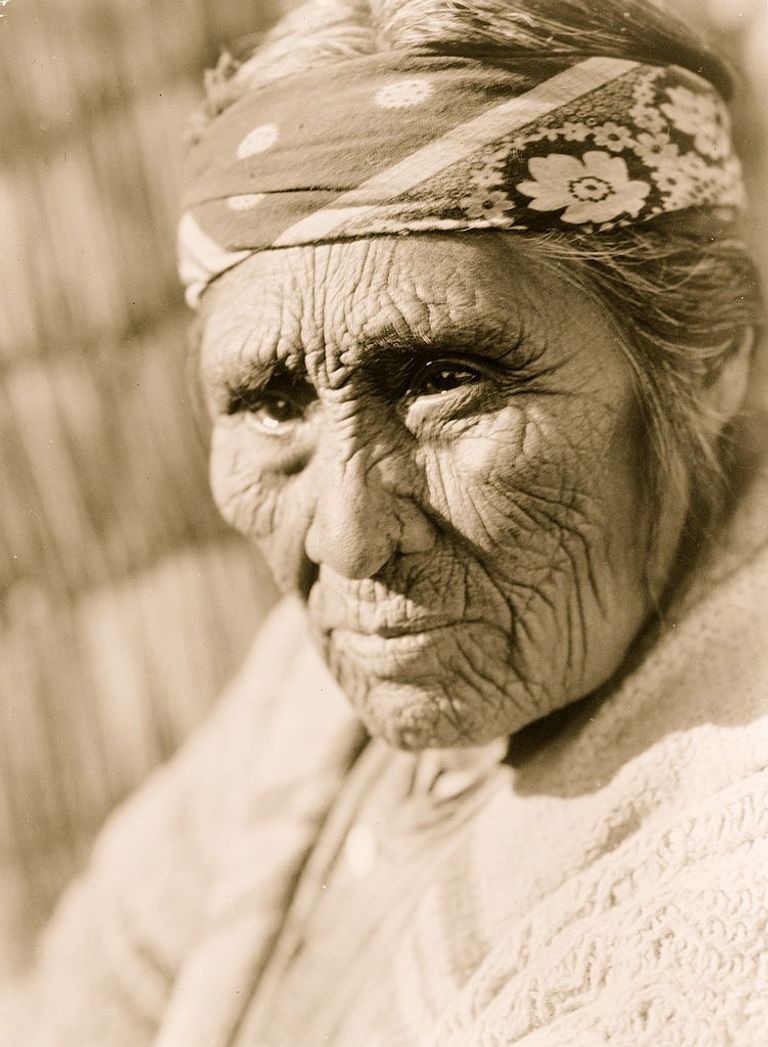
Source: Buyenlarge/Getty Images
Today, few historians believe this story. But there was a time when Sacagawea’s life was shrouded in fiction rather than factual evidence.
Unlocking the Real Story of Sacagawea: Uncovering the Facts of an Iconic Hero
For over a century, historians have been working hard to uncover the true story of Sacagawea. The best source of evidence for her life and times are the journals of Lewis and Clark, written during their famous expedition.
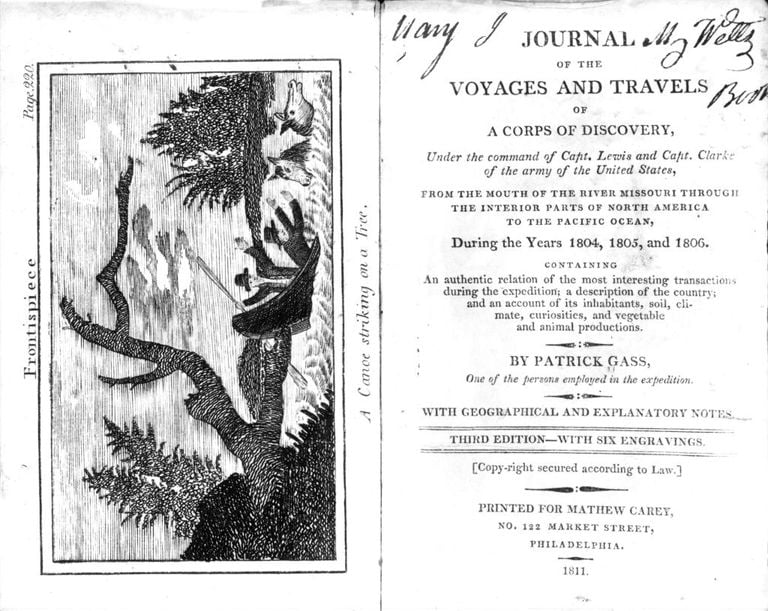
Source: MPI/Getty Images
Unfortunately, a later source has caused some confusion, with incorrect information being spread about Sacagawea’s life. It’s time to put the record straight and uncover the facts of this remarkable woman’s story. Join us as we explore the life of one of America’s most iconic heroes.
A Heroine Unveiled: Sacagawea's Story Brought to Light by Eva Emery Dye
In 1902, Eva Emery Dye published her novel, The Conquest: The True Story of Lewis and Clark, which captivated the imagination of the American public with the tale of Sacagawea. Dye wrote in her journal, “Out of a few dry bones I found in the old tales of the trip, I created Sacagawea.”
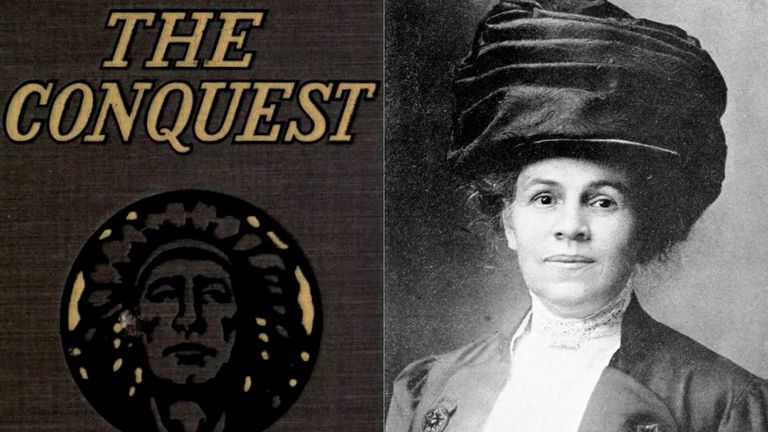
Source: McClurg/Wikimedia Commons|HesperianBot/Wikimedia Commons
While some critics argue that Dye exaggerated the truth, one thing is certain: Sacagawea existed and had a history-making role in the Lewis and Clark expedition, despite years of mistreatment.
